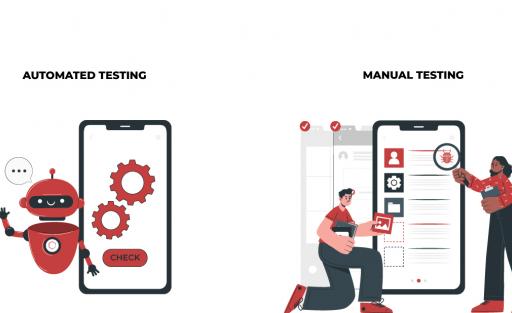Why UX research is neglected?

UX has gained a lot of attention over the last few years as it became a strong buzzword in the tech and digital world. Many professionals from several disciplines are becoming involved in preaching it, justifying it, applying it, etc. It is no exaggeration to say that thousands of professionals worldwide find themselves in a transition phase where they attempt a shift in their careers in order to work as UXers. On the other hand, a large variety of companies have started to invest time and money in UX methodologies and user-centered design practices.
However, we see that many colleagues, product design teams and companies still don’t value or even know about UX (or user) research which is the biggest and the most critical component of the UX field and practice. Why is this happening? What can we do about it?
There are no easy answers as the whole issue has several perspectives and carries a lot of biases and misconceptions. Let’s take a look:
Prejudices against research
First of all, it seems there is a lack of knowledge regarding what user research is all about. In many cases, the word “research” per se may cause serious confusion and even frightens some people. Many of us, when hearing about any kind of research, tend to think lengthy, laborious and very expensive procedures with sophisticated tools, labs, and equipment. But this is not necessarily the case anymore, especially when it comes to modern practices of user research. The need to democratize UX along with the emergence of lean methodologies has shrunk the product development life cycles and UX researchers and practitioners have adapted their practices accordingly. In addition, new software tools and online services made UX research cheaper, faster and managed to reduce the operational complexities in an unprecedented way.
Out of comfort zone
User research can reveal findings that may move colleagues (e.g. designers and software developers) out of their comfort zone. To be frank, yes we could say that evaluative UX research can deliver some “bad news”. As Nielsen says, it is a reality check and may ruin our perceptions of how customers and users think and behave. Since reality can be harsh sometimes, we need to be able to move out of our comfort zone.
To quote Harry Brignull, “if we really want to make a progress we must get comfortable with being uncomfortable”.
“We don’t need that; we already know our customers”
We have witnessed many times this kind of attitude which in some cases is very strong. Usually, it is related to people who are senior and have established specific ways of doing business. These people face great difficulty to follow and apply new practices and generally are reluctant to change.
This is another reflection of the old paradigm, which insists to preach “just make it work”. The thing is that most of the times the “customers” are not the users and their experiences are much more intricate and dynamic than ever before.
“UX is killing my creativity”
Another interesting facet of the issue under discussion (the most peculiar to my perception) has to do with the attitude of disbelief of some visual, UI and UX (?) designers. Some of these colleagues tend to reject or even be opposed to UX research and testing because they say they trust only their inspiration and gut feelings. They believe that users can destroy their creativity with their unrealistic or contradictory demands or they think that users just don’t know what they want copying Steve Jobs’ famous quotation (probably ignoring that Jobs and Apple as a company strongly favored, supported and nurtured research and testing practices).
The big misunderstanding here is that they think that user research is just about passively listening to the users and “obey” to their desires. But it is not about that; great products and services are based on a solid and deep understanding of users, their problems and their needs. Before starting design prototypes and using creativity we need specific answers that only user research can provide.
Basic activities like observing and talking to the users will lead to better ideas and possible effective solutions to their problems. This is what makes a product more successful and it does NOT kill designers' creativity.
“Sure, we already Do Conduct User Research”
Many times we get this answer but we find out that several stakeholders actually see user research as being the same with market research. Sure, user research and market research have a lot of things in common: Both fields employ research methods to understand humans; some of these research methods are the same. However, user research and market research are distinct fields coming from different routes and they have a different focus. Market research targets humans as consumers and potential customers. It aims to understand attitudes towards a product, to better support and analyze product-market fit, etc. On the other hand, user research aims to understand human interaction with a product, system or service. It employs mostly qualitative techniques and it informs design decisions. In brief, it is important to highlight that both market and user research are valuable and necessary to build great products but they are different fields of expertise.
No fancy illustrations, no immediate tangible results
Ok, we have to admit that user research is not sexy enough… it doesn’t produce visually nice and fancy deliverables, it does not provide outputs that are immediately “tangible”.
Unlike UI design and software development, which produce artifacts that people can see and use, the output of user research is information and insights. Although this information is extremely valuable to UX designers, product managers, and software developers, its value may seem somewhat nebulous to others.
Educating the rest of the team, colleagues, and stakeholders within any company about user research seems inevitable for UX researchers and beneficial for all. This will lead to better and more efficient collaboration and better alignment of expectations.
“It’s Difficult to Get Access to Our Users”
This is something we hear quite often. To do user research we must clearly define who the users are and how we are going to find and screen them. This can be a quite tough process and it is a common pain point for many product design teams. Sometimes it may prevent companies who are willing to apply user-centered design practices. Since recruiting is complicated and time-consuming it seems ideal for outsourcing. But this should not be an excuse for not doing user research at all. A couple of simple ideas: Talk first with a customer with whom you have a strong and long term relationship. Chances are that they will better understand your endeavors and thus give you access to some users. If somehow this is difficult, you should at least conduct some pilot studies with colleagues or other stakeholders in your company or try some convenient samples. It’s not ideal, but it is better than nothing.
Happy reading and keep on UXing!




